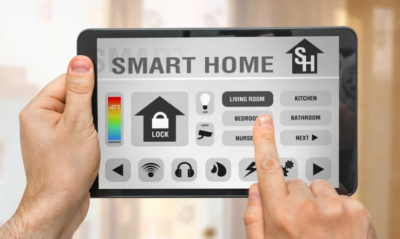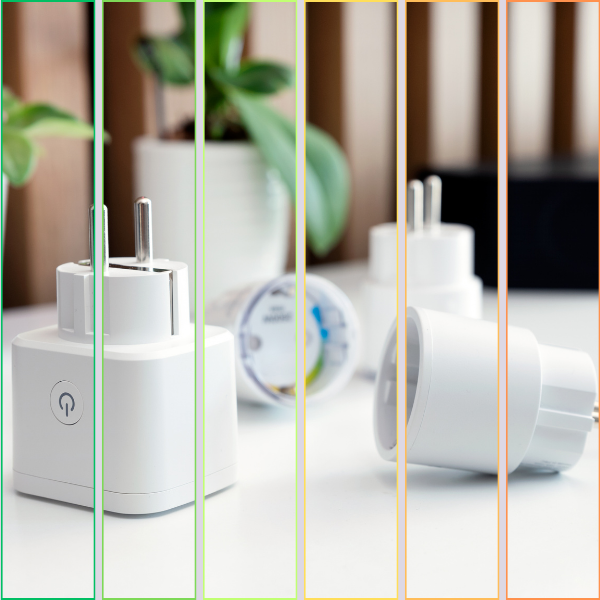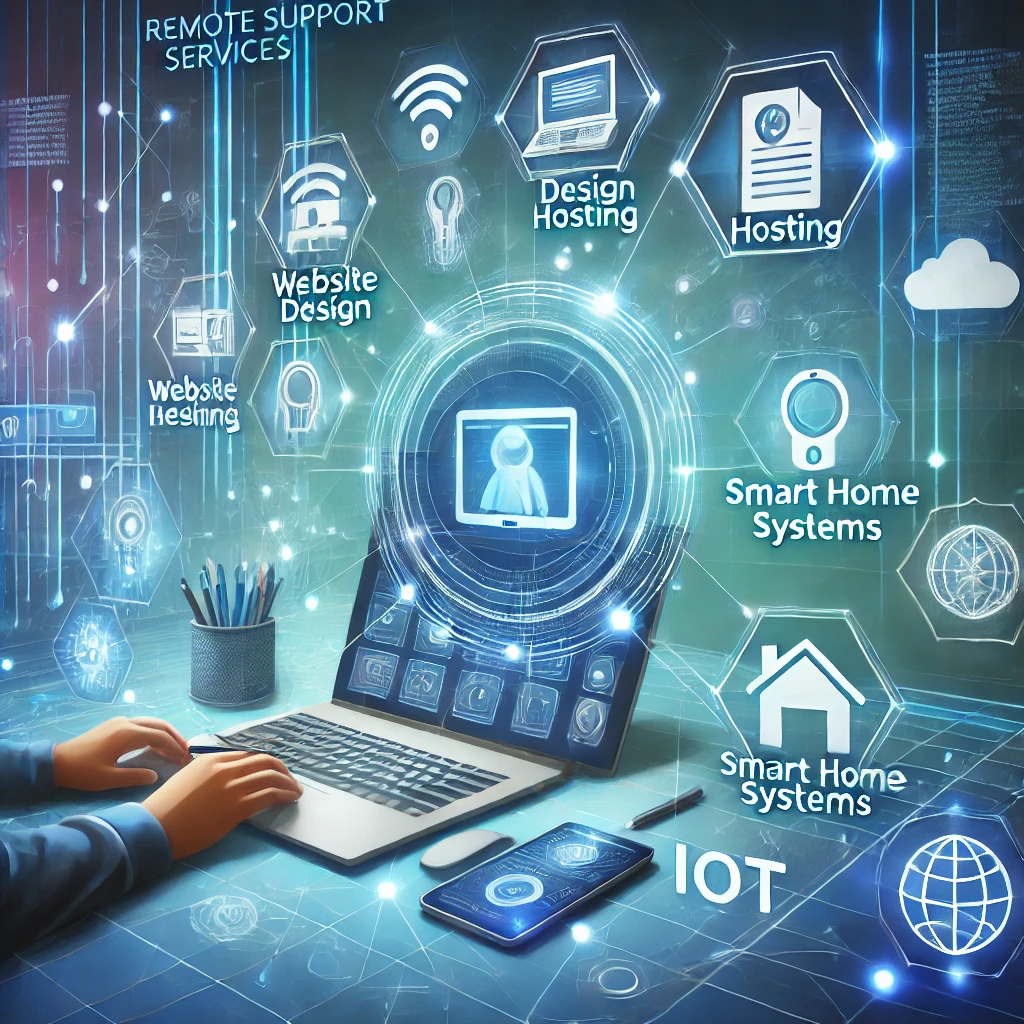
In today’s fast-paced world, convenience and connectivity are key. With the rise of Internet of Things (IoT) technology, the concept of a smart home has become increasingly popular. A smart home is equipped with devices and appliances that can be controlled remotely and automated to enhance the overall living experience.
From adjusting the thermostat to dimming the lights with a voice command, a connected lifestyle offers numerous advantages.
Imagine coming home to a house that knows your preferences. With a smart home, you can set the perfect lighting, temperature, and music for your arrival, all from your smartphone. Forgot to turn off the oven? No need to worry – you can simply use a mobile application to control appliances even when you’re not at home.
A smart home not only offers convenience, but it also helps you save energy and reduce utility bills. With the ability to monitor, control, and optimize energy usage, you can make smarter choices to lower your environmental footprint. Plus, the added security features of a smart home, such as smart locks and cameras, give you peace of mind knowing that your home is protected.
Embrace the future and experience the advantages of a smart home for a connected lifestyle. It’s time to revolutionize the way you live and make everyday tasks simpler and more efficient.
Benefits of a Smart Home
A smart home is a technological marvel that promises to revolu tionize the way we live. By integrating various devices and appliances with intelligent systems, a smart home offers a multitude of benefits that can greatly improve our daily lives.
tionize the way we live. By integrating various devices and appliances with intelligent systems, a smart home offers a multitude of benefits that can greatly improve our daily lives.
One of the primary advantages of a smart home is the enhanced level of convenience it provides. With the ability to control and automate various household tasks, homeowners can streamlinetheir daily routines and free up time for more enjoyable pursuits. From adjusting the thermostat to turning on the lights with a simple voice command, smart home technology puts the power of control at your fingertips. Moreover, a smart home can contribute to increased energy efficiency and cost savings. By monitoring and optimizing energy usage, smart home systems can help homeowners reduce their carbon footprint and lower their utility bills. Intelligent sensors and automated systems can detect and regulate energy consumption, ensuring that resources are used in the most efficient manner.
Energy Efficiency and Cost Savings in a Smart Home
The integration of smart home technology can have a significant impact on energy efficiency and cost savings. By leveraging advanced sensors, algorithms, and automation, smart homes can optimize energy usage and reduce utility bills.

One of the key ways smart homes contribute to energy efficiency is through intelligent climate control. Smart thermostats can learn the homeowner’s preferences and adjust the temperature accordingly, ensuring that the home is heated or cooled only when necessary. This targeted approach to temperature regulation can lead to substantial reductions in energy consumption, particularly during peak usage periods.
Additionally, smart home systems can monitor and manage the usage of other household appliances and devices. By automating the scheduling and operation of these items, smart homes can minimize energy waste and promote more sustainable energy consumption. For example, smart lighting systems can automatically turn off lights in unoccupied rooms, while smart plugs can detect and cut power to idle devices, further contributing to energy savings.
Enhanced Security and Safety Features of a Smart Home
Smart home technology not only enhances convenience and energy efficiency but also plays a crucial role in improving the security and safety of a home. With a range of cutting-edge features, smart homes can provide homeowners with peace of mind and a heightened sense of protection.
One of the primary security benefits of a smart home is the ability to remotely monitor and control access to the property. Smart locks, integrated with mobile applications, allow homeowners to lock and unlock doors, grant temporary access to guests, and receive real-time notifications of any suspicious activity. This level of control and visibility can deter burglars and provide homeowners with the assurance that their home is secure, even when they are away.
Furthermore, smart home security systems can incorporate advanced surveillance capabilities. Smart cameras, strategically placed throughout the property, can capture footage and transmit it to the homeowner’s mobile device, enabling them to monitor their home from anywhere. These security features not only help to deter potential intruders but also provide valuable evidence in the event of a break-in or other incident.
Convenience and Comfort in a Connected Lifestyle
 One of the most significant advantages of a smart home is the enhanced convenience and comfort it offers to its inhabitants. By integrating various devices and appliances into a centralized control system, smart homes can streamline everyday tasks and create a more personalized living experience.
One of the most significant advantages of a smart home is the enhanced convenience and comfort it offers to its inhabitants. By integrating various devices and appliances into a centralized control system, smart homes can streamline everyday tasks and create a more personalized living experience.
Imagine coming home to a house that anticipates your needs. With smart home technology, the lighting, temperature, and music can be automatically adjusted to your preferred settings, creating a warm and welcoming environment. No more fumbling with multiple remotes or manually adjusting each individual device – a smart home can seamlessly coordinate these elements to provide a truly customized experience.
Moreover, smart home features can simplify and automate routine household tasks, freeing up time and energy for more enjoyable pursuits. From scheduling laundry cycles to setting reminders for grocery orders, smart home systems can handle the mundane chores, allowing homeowners to focus on the things that matter most to them.
Smart Home Automation and Control Systems
At the heart of a smart home lies a sophisticated automation and control system that seamlessly integrates various devices and appliances, enabling homeowners to manage their environment with ease.
These control systems, often accessed through mobile applications or voice commands, allow homeowners to monitor and adjust a wide range of home functions, from lighting and temperature to security and entertainment. With a few taps on a smartphone or a simple voice instruction, homeowners can effortlessly control their home’s environment, creating a personalized and efficient living experience.
The automation capabilities of smart home systems extend beyond basic controls, offering advanced features that anticipate the homeowner’s needs and preferences. For instance, smart home systems can learn the homeowner’s daily routines and automatically adjust settings accordingly, ensuring that the home is always in a state of optimal comfort and efficiency.

Internet of Things (IoT) Devices in a Smart Home
At the core of a smart home’s functionality lies the integration of Internet of Things (IoT) devices. These interconnected devices, equipped with sensors and communication capabilities, enable seamless data exchange and remote control, transforming the way we interact with our living spaces.
From smart speakers and lighting to security cameras and appliances, IoT devices in a smart home work together to create a cohesive and responsive environment. By collecting and analyzing data from these devices, smart home systems can make informed decisions and automate various tasks, enhancing the overall living experience.
One of the key advantages of IoT devices in a smart home is their ability to provide valuable insights and data-driven recommendations. For example, smart home sensors can monitor energy usage patterns, identify areas of waste, and suggest energy-saving measures, empowering homeowners to make more informed decisions about their resource consumption.
Smart Home Technology Trends and Innovations
As technology continues to evolve, the smart home landscape is constantly expanding, with new and innovative solutions emerging to enhance the connected living experience. From advancements in voice control to the integration of artificial intelligence, the future of smart homes is both exciting and promising.
One of the most prominent trends in smart home technology is the growing integration of voice-controlled assistants. With the rise of devices like Amazon Alexa and Google Assistant, homeowners can now control various aspects of their homes simply by using their voice. These virtual assistants can perform a wide range of tasks, from setting reminders and playing music to adjusting the thermostat and turning off lights, making the smart home experience more intuitive and hands-free.
Another emerging trend in the smart home landscape is the incorporation of artificial intelligence (AI) and machine learning. By leveraging these advanced technologies, smart home systems can learn from user behavior and preferences, providing personalized recommendations and automating tasks more effectively. For instance, AI-powered smart home systems can analyze energy consumption patterns and make real-time adjustments to optimize energy efficiency, or they can detect and respond to potential security threats with greater accuracy.
Considerations when Transitioning to a Smart Home
While the benefits of a smart home are numerous, the transition to a connected living environment may require careful planning and consideration. Homeowners should carefully evaluate their needs, budget, and the compatibility of existing devices before embarking on the smart home journey.
One of the primary considerations when transitioning to a smart home is the initial investment required. Outfitting a home with smart devices and automation systems can be a significant financial commitment, and homeowners should carefully weigh the long-term benefits against the upfront costs. However, it’s important to note that the energy savings and enhanced security features of a smart home can often offset these costs over time.
Another crucial factor to consider is the compatibility and integration of smart home devices. Homeowners should research the various platforms and ecosystems available, ensuring that the devices they choose can seamlessly communicate with one another and work cohesively within the smart home environment. This level of integration is essential for achieving the full benefits of a connected living experience.
Conclusion: Embracing the Future with a Connected Lifestyle
As we move towards a more technologically advanced future, the concept of a smart home has become increasingly compelling. By embracing the advantages of a connected living environment, homeowners can enjoy enhanced convenience, energy efficiency, security, and overall quality of life.
From the ability to control and automate household tasks with a simple voice command to the peace of mind provided by advanced security features, a smart home offers a transformative experience that can revolutionize the way we live. By leveraging the power of IoT devices and intelligent control systems, homeowners can create a personalized and responsive living space that adapts to their needs and preferences.
As smart home technology continues to evolve, the future of connected living holds even greater promise. Innovations in artificial intelligence, voice control, and energy optimization will further enhance the smart home experience, making it an increasingly attractive option for those seeking to embrace the conveniences and efficiencies of a modern, technology-driven lifestyle.



